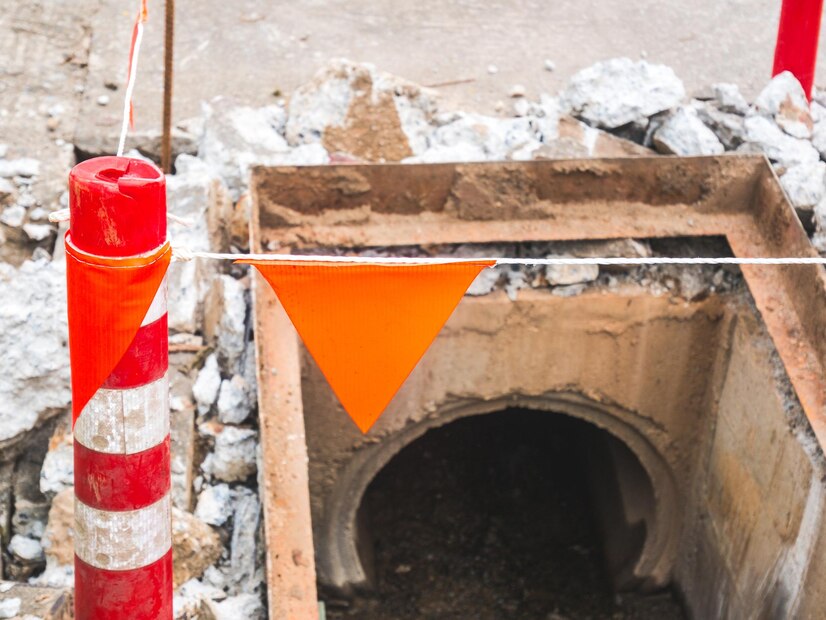A well-organized job site is key to maintaining efficiency, preventing accidents, and ensuring work stays on schedule. Whether it’s a construction zone, a landscaping project, or a utility installation, keeping workers safe and tasks clearly defined is essential for smooth operations. However, many job sites struggle with issues such as poor visibility, misplaced materials, and unclear boundaries, all of which can lead to costly delays and potential hazards.
Fortunately, simple tools can make a big difference in improving safety and organization. Items like marking flags, cones, and temporary barriers help establish clear work zones and guide teams effectively. In this article, we’ll explore common challenges job sites face, essential tools for creating a well-structured work environment, and how practical solutions can enhance visibility and efficiency.
Common Safety and Organization Challenges on Job Sites
Job sites, whether in construction, landscaping, or utility work, require a high level of coordination and safety measures to function efficiently. Without clear organization, projects can face unnecessary delays, safety hazards, and miscommunication among teams. Below are some of the most common challenges that can disrupt workflow and productivity.
Managing Large or High-Traffic Areas
- On expansive job sites, keeping track of different work zones can be difficult.
- Without clear boundaries, equipment and materials may be misplaced, leading to inefficiencies.
- Marking key locations with visible indicators can help maintain organization and ensure teams stay on track.
Preventing Accidents and Miscommunication
- Workers moving between areas may unintentionally enter hazardous zones.
- Lack of proper signage or visual markers can result in confusion, increasing the risk of mistakes or injuries.
- Simple solutions like color-coded markers can provide clear guidance, reducing the likelihood of miscommunication.
Avoiding Equipment and Material Misplacement
- Job sites often involve multiple teams working with different tools and materials, making it easy for things to get lost.
- Misplaced materials can lead to delays, inefficiencies, or even safety risks if they obstruct pathways.
- Establishing designated storage areas and using visual markers can help teams quickly locate essential items and maintain an organized worksite.
By identifying and addressing these challenges early on, job site managers can create a more efficient and hazard-free environment.
Essential Tools for Improving Worksite Safety and Organization
Keeping a job site safe and well-organized requires the right tools. Simple, cost-effective solutions can make a significant impact on visibility, efficiency, and overall workflow. By integrating these tools into daily operations, workers can navigate job sites more effectively while reducing the risk of accidents.
Marking Flags and Cones
- Marking flags and cones help define boundaries, designate work zones, and improve visibility on job sites.
- These tools are especially useful in areas with high foot traffic or heavy machinery, ensuring workers can easily identify safe pathways.
- Brightly colored options, such as orange marking flags, provide a clear visual indicator for designated areas, improving safety and efficiency.
Temporary Barriers and Signage
- Barriers and caution signs prevent unauthorized access to restricted areas.
- These tools help guide traffic flow, whether it’s pedestrians on a construction site or vehicles in an industrial zone.
- Using temporary signage ensures that all workers and visitors understand site rules and hazards at a glance.
Color-Coded Systems for Efficiency
- Assigning specific colors to different tasks helps workers quickly identify zones and responsibilities.
- For example, red markers can indicate danger zones, while green may signify completed areas.
- A consistent color-coded system reduces confusion and allows teams to work more efficiently.
By utilizing these essential tools, job site managers can create a safer and more structured environment that enhances productivity. Investing in small but effective solutions can prevent accidents and keep operations running smoothly.
Best Practices for Keeping a Worksite Safe and Organized
Maintaining a safe and efficient job site requires consistent planning, the right tools, and clear communication. By following best practices, construction crews and landscapers can reduce risks, improve productivity, and ensure smooth project execution.
Pre-Planning Site Layouts Before Beginning Work
- Before any work begins, project managers should map out zones for different tasks, such as excavation, equipment staging, and pedestrian walkways.
- Using visual markers, such as orange marking flags and cones, helps define these zones and keeps workers on track.
- A well-planned layout minimizes confusion and improves workflow efficiency from day one.
Using Durable, Weather-Resistant Markers for Long-Term Projects
- Outdoor job sites are exposed to wind, rain, and extreme temperatures, which can fade or displace standard markers.
- Choosing durable materials, like heavy-duty marking flags and UV-resistant signage, ensures site markers remain visible and reliable.
- Long-lasting markers reduce the need for frequent replacements, saving both time and resources.
Regularly Updating Worksite Markings to Reflect Progress
- As projects evolve, boundaries and work zones may shift, requiring updated markings to maintain clarity.
- Conducting regular site inspections helps identify areas where markers need to be adjusted or replaced.
- Keeping worksite markings current ensures that workers always have clear guidance, reducing errors and increasing efficiency.
By implementing these best practices, job sites can operate more smoothly, reduce the likelihood of safety incidents, and improve overall productivity. Taking the time to establish clear, well-maintained markings is a small step that yields significant long-term benefits.
Conclusion
A well-organized job site is essential for maintaining safety, improving efficiency, and preventing costly mistakes. Simple tools like marking flags, cones, and temporary signage provide clear visual guidance, helping teams stay on track and reducing the risk of accidents. Marking flags, in particular, offer a highly visible and versatile solution for defining work zones, highlighting hazards, and ensuring smooth project execution.
By implementing best practices such as pre-planning site layouts, using durable markers, and regularly updating worksite boundaries, project managers can create a safer and more productive environment. Investing in these small but effective solutions helps keep operations running efficiently while protecting workers and equipment.
With the right approach and the right tools, job sites can become safer, more structured, and better equipped to handle the demands of any project.














